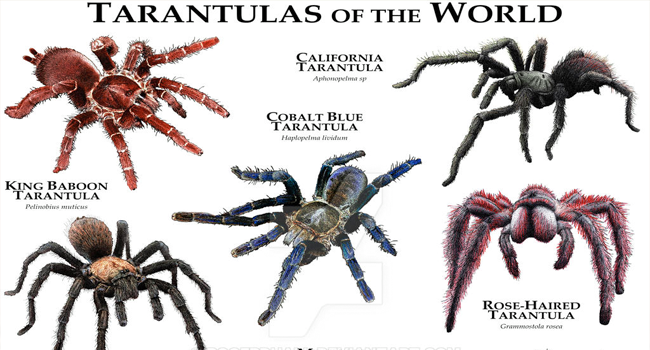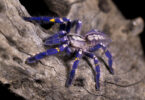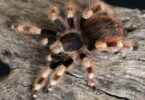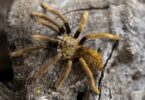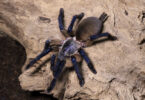Introduction
Tarantulas are one of the most well-known and diverse groups of spiders, with over 900 recognized species worldwide. These impressive arachnids have captivated the curiosity of entomologists, arachnophiles, and casual observers alike. While often portrayed as significant, fearsome creatures, tarantulas exhibit various sizes, colors, and behaviors. In this comprehensive species overview, we’ll delve into the world of tarantulas, exploring their diversity, habitat, and fascinating characteristics.
Taxonomy and Distribution
Tarantulas belong to the family Theraphosidae, a diverse group of spiders with a presence on every continent except Antarctica. Most tarantulas are found in the Americas, with a significant number inhabiting South and Central America. While Africa, Asia, and Australia also host some species, most are concentrated in the New World. These spiders occupy a variety of ecosystems, from deserts and grasslands to rainforests and swamps, adapting to a wide range of environments.
The Giant Tarantulas
When people think of tarantulas, they often picture the larger species known as “giant tarantulas.” Some of the most renowned members of this group include:
Goliath Bird-eater (Theraphosa blondi)
- The most enormous tarantula in the world, with a leg span of up to 11 inches.
- Found in the rainforests of South America, primarily in Brazil.
- Known for its impressive size and a diet that occasionally includes small vertebrates like birds.
Mexican Redknee Tarantula (Brachypelma smithi)
- A strikingly colorful tarantula with a black body and bright red-orange knees.
- Native to the deserts and scrublands of Mexico.
- A popular choice among tarantula enthusiasts due to its attractive appearance and relatively docile nature.
Arboreal Tarantulas
While some tarantulas are terrestrial, many are arboreal, meaning they live in trees and shrubs. These species are often known for their exceptional climbing abilities and unique adaptations:
Pink-toed Tarantula (Avicularia avicularia)
- Characterized by its striking pink-colored toes.
- Native to the rainforests of South America.
- A valid arboreal species, spending most of its life high up in the canopy.
Greenbottle Blue Tarantula (Chromatopelma cyaneopubescens)
- Renowned for its vivid blue and green coloration.
- Found in the dry forests of Venezuela.
- Known for its striking appearance and web-spinning behavior.
Desert Dwellers
Tarantulas have adapted to various arid environments, and some are particularly well-suited for desert life:
1.Arizona Blonde Tarantula (Aphonopelma chalcodes)
- Named for its light, sandy appearance.
- Inhabits the deserts of the southwestern United States and Mexico.
- A popular choice among hobbyists for its docile temperament and ease of care.
-
Indian Ornamental Tarantula (Poecilotheria regalis)
- A stunning species native to the deciduous forests of India and Sri Lanka.
- Known for its intricate and colorful patterns.
- Skilled arboreal hunters that spin elaborate webs.
Unique Defensive Mechanisms
Many tarantula species have developed unique defensive mechanisms that vary between species. Some of these adaptations include:
Urtricating Hairs
- Several tarantulas possess specialized hairs on their abdomen, which can be ejected as a defense mechanism.
- These hairs are covered in microscopic barbs and can cause irritation and injury to potential predators.
- Examples include the Brachypelma and Aphonopelma genera.
Reproduction and Mating Behavior
Tarantula reproduction is a complex and often perilous process for the males. They must approach a female with caution to avoid becoming a meal themselves. The following are common mating behaviors:
Courtship Dance
- Male tarantulas typically engage in intricate courtship displays to gain the female’s favor.
- These dances can include tapping on the female’s web or using vibrations to communicate.
Sperm Transfer
After a successful courtship, the male deposits a sperm packet on the ground and then transfers it to specialized structures on his pedipalps, which he uses to fertilize the female.
Cannibalism
- In some species, it is common for females to consume the male after mating.
- This behavior is believed to be an adaptive strategy to provide the female with nourishment for egg production.
Lifespan and Growth
Tarantulas have relatively long lifespans, with females often outliving males. While the specifics vary among species, a typical tarantula’s life cycle can be summarized as follows:
Molt and Growth
- Tarantulas grow by molting, shedding their exoskeleton to reveal a larger one beneath.
- As they grow, tarantulas may undergo several molts before reaching maturity.
Lifespan
- The lifespan of a tarantula varies widely based on species.
- Some species can live for 10-15 years, while others, like the Goliath bird-eater, may live up to 25 years.
Popular Tarantulas in the Pet Trade
Tarantulas have gained popularity as pets among enthusiasts due to their captivating appearance and relatively low maintenance. Some sought-after species include:
Chilean Rose Tarantula (Grammostola rosea)
- A docile and low-maintenance species.
- Native to the deserts of Chile.
Brazilian Black Tarantula (Grammostola pulchra)
- Recognizable by its entirely black appearance.
- Known for its calm disposition and striking appearance.
Honduran Curly Hair Tarantula (Brachypelma albopilosum)
- Noted for its curly hair and gentle nature.
- Native to Central America.
Conservation Concerns
Many tarantula species face threats due to habitat destruction and overcollection for the pet trade. Conservation efforts are essential to protect these fascinating creatures and their ecosystems. Some initiatives include:
Habitat Preservation
- Efforts to safeguard natural habitats and create protected areas to conserve tarantula populations.
Sustainable Harvesting
- Promoting responsible collection practices in the pet trade industry to prevent overexploitation.
Habitat Protection
The primary objective in preserving tarantula species is to conserve their natural habitats. This involves creating and maintaining protected areas safeguarding rainforests, deserts, and other environments where they reside. Preserving these ecosystems is vital for the well-being of countless species, not just tarantulas.
Sustainable Collection Practices
For species that are traded as pets, promoting responsible and sustainable collection is imperative. Legal frameworks, regulations, and oversight can help ensure that harvesting tarantulas does not lead to overexploitation.
Research and Education
Ongoing research is vital to understanding the biology, behavior, and needs of different tarantula species. This knowledge serves as the foundation for informed conservation efforts. Education and outreach programs are equally crucial for raising awareness and fostering a sense of responsibility for these creatures.
In situ and Ex situ Conservation
In situ conservation involves protecting tarantulas in natural habitats. This approach focuses on safeguarding entire ecosystems. Ex-situ conservation, on the other hand, consists of maintaining populations in captivity to ensure their survival. Breeding programs, for instance, can help prevent the extinction of threatened species.
Community Involvement
Engaging local communities near tarantula habitats is essential. Encouraging sustainable livelihoods that do not rely on destroying these habitats is vital. Involving local communities in conservation efforts can create a sense of shared responsibility.
International Cooperation
Tarantulas, as well as other wildlife, often cross international borders. Therefore, international cooperation and agreements are crucial for their conservation. These agreements can range from the protection of specific species to broader initiatives addressing habitat conservation.
Protecting tarantulas is part of the more significant movement to conserve biodiversity. Tarantulas, as iconic and captivating as they are, serve as flagship species that can rally support for broader conservation efforts. When we work to safeguard these spiders, we also protect the ecosystems they call home.
Support Conservation Organizations
Numerous organizations are dedicated to conserving arachnids and their habitats. By contributing to or volunteering with these organizations, you can make a tangible difference in preserving tarantulas and other wildlife.
Responsible Pet Ownership
If you choose to keep tarantulas as pets, educate yourself about the specific needs of the species you care for. Responsible pet ownership includes providing proper enclosures, diet, and veterinary care if needed. Additionally, they always source captive-bred individuals rather than those collected from the wild.
Promote Sustainable Practices
Encourage using sustainable and ethical practices in the pet trade. This includes supporting breeders who adhere to ethical standards and advocating for the protection of wild populations.
Educational Initiatives
Promote educational initiatives that teach the public about the importance of tarantulas in the ecosystem. Dispelling myths and misconceptions about these creatures can help reduce fear and encourage respect for their role in nature.
Habitat Restoration
Participate in or support habitat restoration projects in areas where tarantulas are found. Restoring degraded habitats can provide a safe environment for these spiders to thrive.
Advocate for Policy Change
Engage with policymakers and advocate for more vital legislation to protect tarantulas and their habitats. Support international agreements that address the conservation of wildlife on a global scale.
Scientific Research
Encourage and support scientific research into tarantula biology, behavior, and venom properties. Such research not only contributes to our knowledge of these creatures but may also uncover potential medical applications.
Community Involvement
Get involved in community-based conservation efforts that empower local communities to take ownership of protecting their natural environments. This can lead to long-lasting, sustainable solutions.
Conclusion
Tarantulas are a diverse and captivating group of spiders that continue to capture the imagination of arachnologists and enthusiasts alike. Their impressive range of sizes, behaviors, and adaptations make them a fascinating subject of study. From the giant bird-eating tarantulas to the colorful arboreal species, each tarantula has a unique story. Understanding the taxonomy, distribution, and specific characteristics of various species is crucial for both conservation efforts and responsible pet ownership.

